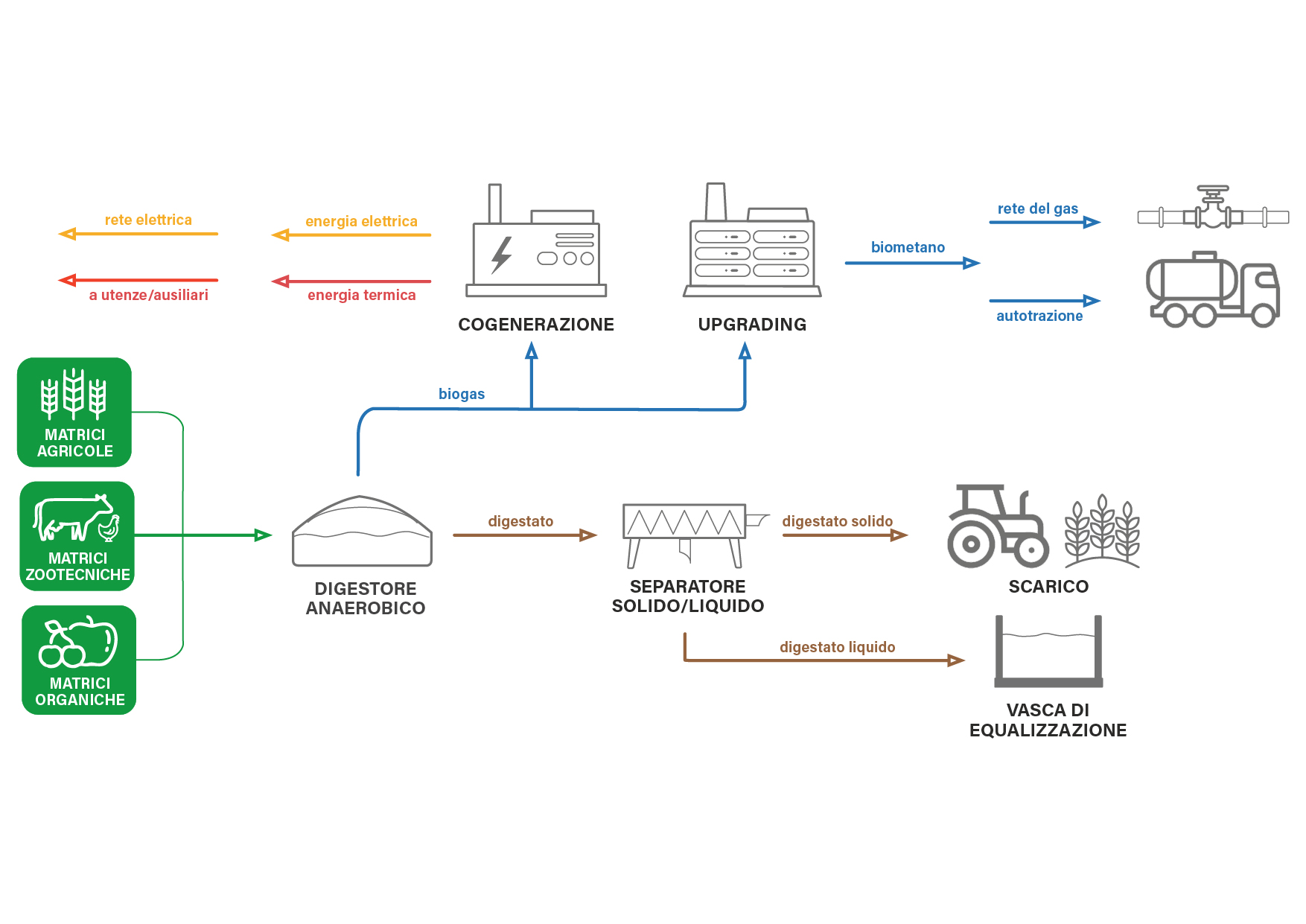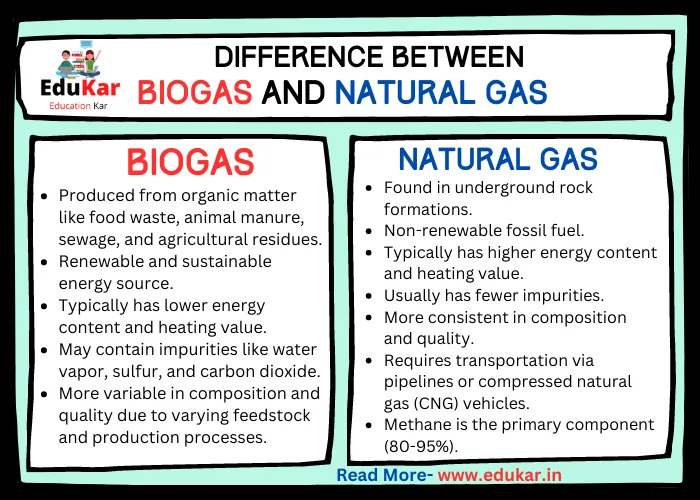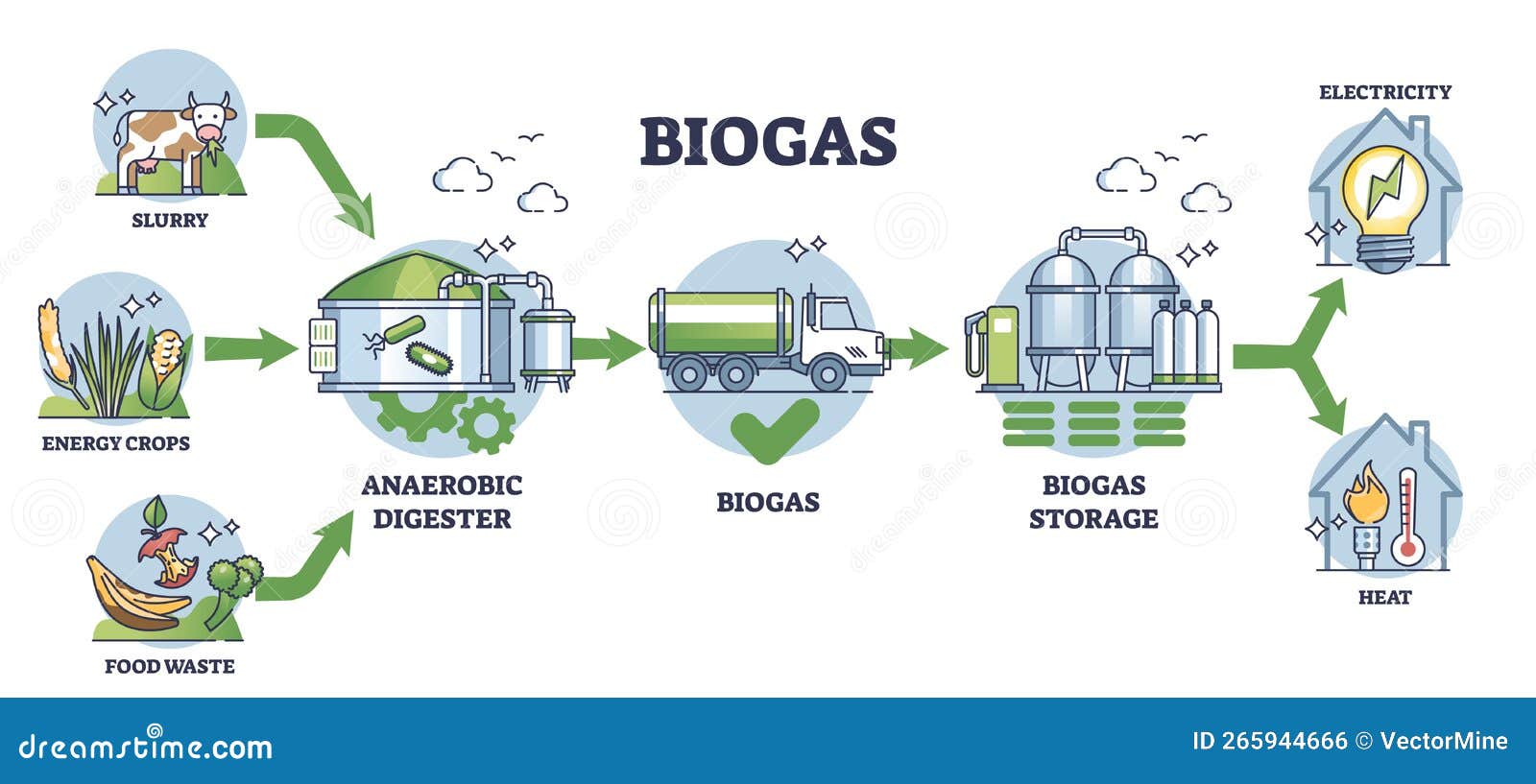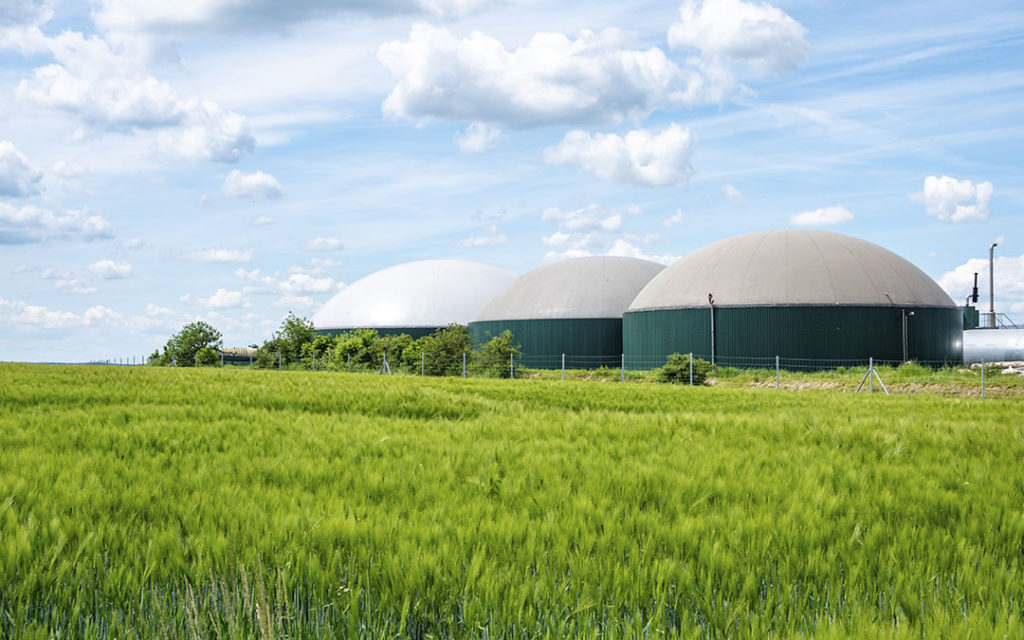Difference Between Biogas and Natural Gas Compare the Difference Between Similar Terms
An introduction to biogas and biomethane Outlook for biogas and biomethane Prospects for

Biogas, which may be called renewable natural gas (RNG) or biomethane, is an energy-rich gas produced by anaerobic decomposition or thermochemical conversion of biomass. Biogas is composed mostly of methane (CH 4 ), the main compound in fossil natural gas, and carbon dioxide (CO 2 ). The methane content of raw (untreated) biogas may vary from.
Difference Between Biogas and Natural Gas Compare the Difference Between Similar Terms

Through methanisation, non-recyclable waste becomes a source of renewable energy. The biogas produced (65-70% of which is methane and CO2) is captured in anaerobic digesters and then burnt to produce heat or electricity, or both, using a cogeneration system. Finally, it can also be purified to extract the methane: biomethane, a renewable gas, captured in this way can be injected into natural.
Biogas and Biomethane Biowaste

Biogas and biomethane systems are mature and multi-functional Biogas and biomethane systems based on anaerobic digestion have been successfully applied in connection with power, heating and/or gas grids, and as standalone solutions in numerous applications worldwide; biogas and biomethane applications are a mature technology.
Difference Between Biomass and Biogas Definition, Sources, Uses

Therefore, biogas is often purified through a process called " upgrading " to create a purer form of biogas called biomethane. In other words, biomethane is the purer form of green gas which means it has reached the same level of purity as natural gas from fossil fuels. For this reason, sometimes biomethane is referred to as "renewable.
Realtime quality measurements in biogas and biomethane Endress+Hauser

Conversely, biogas can occasionally be a biofuel for renewable power and heat. Biogas is still better than biomethane because it uses organic waste to generate energy, even though its methane level is lower. Conclusion. Renewable energy advocates would do well to familiarize themselves with the differences between biogas and biomethane.
Biogas or bio gas division for energy consumption and sources outline diagram in 2023 Biogas

Landfills with landfill methane capture systems can capture and use the methane as an energy source. This form of biogas is usually different to the biogas that comes from controlled biogas digesters, as the nutrients usually can't be recycled, and obviously the conditions of digestion can't be controlled as closely or contained. Sources.
Biogas and Biomethane’s untapped potential across the world Energy Post

Abstract. Biomethane is a pure form of biogas and in this pure form can be used a natural gas substitute. The biomethane is a natural gas formed in an anaerobic process which is the decomposition of organic matter without oxygen access. This chapter briefly introduces the biogas technology overview, technological aspects of biogas production.
A biogas plant is where biogas is produced by fermenting biomass

Biomethane is processed by upgrading biogas to remove impurities such as carbon dioxide, water vapor, and other trace gases. The result is a product that is composed of >95% methane. During the upgrading process, the biogas passes through a series of absorption and desorption steps. The first step is to remove carbon dioxide from the biogas.
Biomass vs BiogasDifference between biomass and biogasBiomass and biogas differenceBiomass

Biogas and biomethane are generated from different types of organic residues, turning waste into a valuable resource, which is the core principle of an efficient circular economy. Food waste or wastewater can be recovered from our cities and used to produce renewable energy, which helps develop a local bioeconomy. In the countryside, residues.
Biomethane matters — LTZ Energy Solutions

The name biomethane refers to the method of production, rather than the gas content. This chapter explains the difference between biogas and biomethane and explores the production of biomethane in selected countries.. In 2018, biogas and biomethane produced about 17% of electricity generation from renewable sources. Biomethane can be.
Difference between Biogas and Natural Gas Edukar India

Biogas is the direct product of a methanisation unit. It is produced by the fermentation of organic matter in the digester. It comprises 60% methane and 40% CO2. It can be used for cogeneration of heat and electricity. Biomethane is a biogas from which the carbon dioxide, hydrogen sulfide and water have been removed.
Biogas Production Infographics Vector Illustration 275721720

Biomethane is a clean form of biogas that is 98% methane. Also known as green gas, it can be used interchangeably with conventional fossil-fuel natural gas. Biogas is a mixture of around 60%.
¿Qué es el biogás?, ¿y el biometano?

The Differences between Biogas and Biomethane. The key differences between biogas and biomethane are their purity and suitability for various applications. Biogas is made of methane (CH4), carbon dioxide (CO2), and trace amounts of other gases. It's primarily suited for on-site energy needs, like heating, cooking, and electricity generation.
Difference Between Biogas and Natural Gas

There's an important difference between biogas and biomethane. Biogas contains between 50 - 70% methane. To enable it to be used as part of the gas grid or used as a transport fuel - it requires purifying to 95% (biomethane), the same as the natural gas it is replacing. This purification and upgrading process can produce emissions, as well as.
SOLUTION The difference between biomethane and biogas to all students Studypool

Biomethane vs Biogas: Key Takeaways. Biogas is a gas mixture produced from organic matter in an oxygen-free environment, containing methane, CO 2, and trace gases, while biomethane is the refined form of biogas with a higher methane content after removing CO 2 and impurities. Biomethane's versatility makes it suitable for use as renewable.
Residential and Community Scale Biogas A Missing Link « Green Energy Times

This means that the biogas-to-biomethane upgrading stage can provide a life cycle saving of more than 1764 k€/y, while the difference between the analysed techniques can reach a value of about 60 k€/y.. Obtained results confirm that there are no significant differences between the life cycle costs of the upgrading units, which range.
.